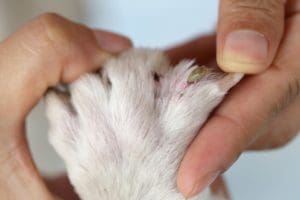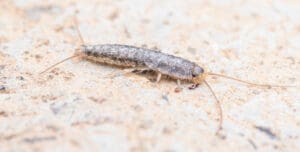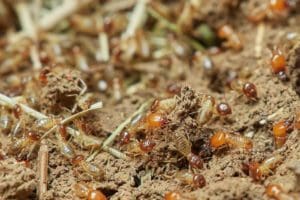

Ticks are one of the most common pests in the US as they breed quickly and attach themselves to many different living species. Although ticks are relatively harmless, they have earned the title ‘pest’ for a reason – no one wants to be saddled with a tick infestation as they can be difficult to get rid of completely.
Despite being mostly harmless, there is a possibility that ticks can transmit diseases through their bites, especially to living beings with developing or weakened immune systems. This makes pets and children particularly vulnerable. So, it’s important that you check those around you for ticks and know how to get rid of them.
The following tick control practices will ensure that you can identify and remove ticks quickly and keep your kids and furry friends safe.
Checking Children For Ticks
Ticks are synonymous with children as kids often spend more time outdoors in the grass and sand than adults do. This gives ticks ample opportunity to attach themselves to the clothing and hair of children and makes them an easy target for infestation.
It is important to remove and wash your kid’s clothes as soon as they come home from wherever they might have been playing, especially if it’s an area where ticks might be breeding such as a park or schoolyard. Drying clothes on high heat after washing is also a great way to kill any remaining ticks that weren’t removed by water and soap.
Ticks are small and not always easy to identify, so you need to act quickly. Within two hours of coming home be sure to check your children in water, as this is one of the easiest ways to find ticks. Whether in the bath, basin, or pool, get into the habit of checking your little ones each night to protect them from tick bites. Ticks like to hide between toes, in hair, behind ears, and under the armpits.
After the process of tick identification, you need to know what to do should you find one.
Firstly, you’ll need to remove the tick from the body. This isn’t always as simple as it sounds because ticks like to bite and hold on. Grab a pair of tweezers, squeeze the tick, and start pulling. This may be a little painful, but it shouldn't be more than a few pin-prick-like sensations. Persistence is key in this process, as eventually, the tick will let go if the pulling is consistent enough.
Once the tick has been removed, wash the affected area with anti-bacterial soap and repeat the process for any remaining ticks. All of these steps will reduce the chances of disease transmission and infection.
Tackling Ticks and Pets
Just like children, pets love to frolic around outdoors, roll around in the grass, and generally have a good time without worrying too much about personal hygiene. Therefore, you must learn the process of tick removal for cats, dogs, rabbits and any other pets that you have too. Animals, however, present a more difficult tick problem as most pets have long fur, meaning that the process of identification is much more challenging.
Start at the head of your pet and move your way down along the body, moving hair and scanning the skin for any signs of ticks. If you feel small bumps with your fingers, that means it’s time to investigate closer.
Once ticks have been identified, the process of removal is more or less the same as with children. You’ll need a pair of tweezers, and you’ll need to know the technique. This is where things get tricky because ticks have more to hold on to when there’s fur. You need to grab the tick at the closest possible point to the animal’s skin, squeeze tight, and rotate it to loosen the tick’s grip. Once you have removed the tick be sure to dispose of it safely or kill it, and then clean the affected area with soap and water. The cleaning process is essential as it reduces the chances of infection.
Live A Tick-Free Lifestyle
Ticks are a nasty pest that no one enjoys dealing with, but they are part of playing outside, especially in the warmer months. If you have a tick problem in your own backyard, Twin-Boro can assist. Our team of professionals can assist in reducing the tick population and limiting the exposure your children and pets have to ticks.
In addition to professional help, it is important to implement tick prevention tips to further protect your loved ones. Even with regular pest control maintenance, you should always be vigilant with your kids and pets, especially if they’re not playing in your backyard. Make tick checks a regular habit, use tick repellents, and ensure that everyone stays as safe as possible. Taking these precautions can greatly reduce the risk of tick bites and the potential transmission of tick-borne diseases.







